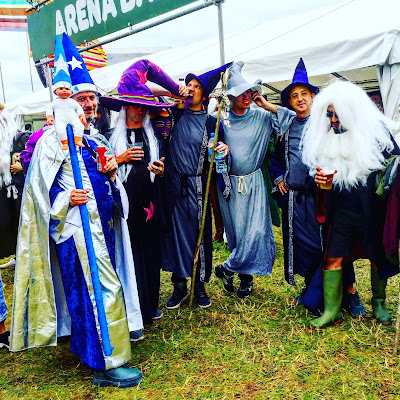I've been going to WOMAD ever since it began, often to sell programmes, tramping round the campsite, taking the programmes to the happy campers having breakfast, or an evening aperitif. Until one day, two years ago, when the management changed and we all lost our programme selling jobs. But I still go, whatever the weather. But this year I found myself alone at the last minute. Friends were ill, exhausted, stuck at home with people to look after etc.
On Friday Shye Ben Tzur, Israeli composer, performer, poet played with the Rajasthan Express in the Siam tent. He composes instrumental and devotional music in Hebrew, Urdu and Hindi, wonderful fusions of traditional Indian Sufi music, jazz and Rajasthani brass band sounds. I first saw him perform in the Mehrangar fort in Jodhpur, during the sacred music festival last year, with Jonny Greenwood and all sorts of Rajasthani musicians from different musical traditions, all jamming together. For a while I was transported back to the hot, dry Rajasthani desert, away from the wet, muddy English countryside.
Nomade Orquestra from Brazil played a wonderfully jazzy set in the big red tent on Saturday.Then everyone rushed to the Siam tent as the rain began to fall, where a rapper was entertaining the crowd - not my favourite kind of music, but it was far too wet to go anywhere else. Leaving the tent after the set was not an appetising prospect, so most of us were trapped, waiting for Seu Jorge, who surreally sang David Bowie songs in Portuguese. The audience joined in and sang in English. A very strange set.
Rain stopped just long enough for us to leave the tent and stand in the mud, or dance in the mud to Toots and the Maytals. Half way through his set the rain started again in earnest. People put their umbrellas up and stayed to watch, but I joined the throng of fleeing festival goers as we tramped and skidded through the slippery mud to the car park.





